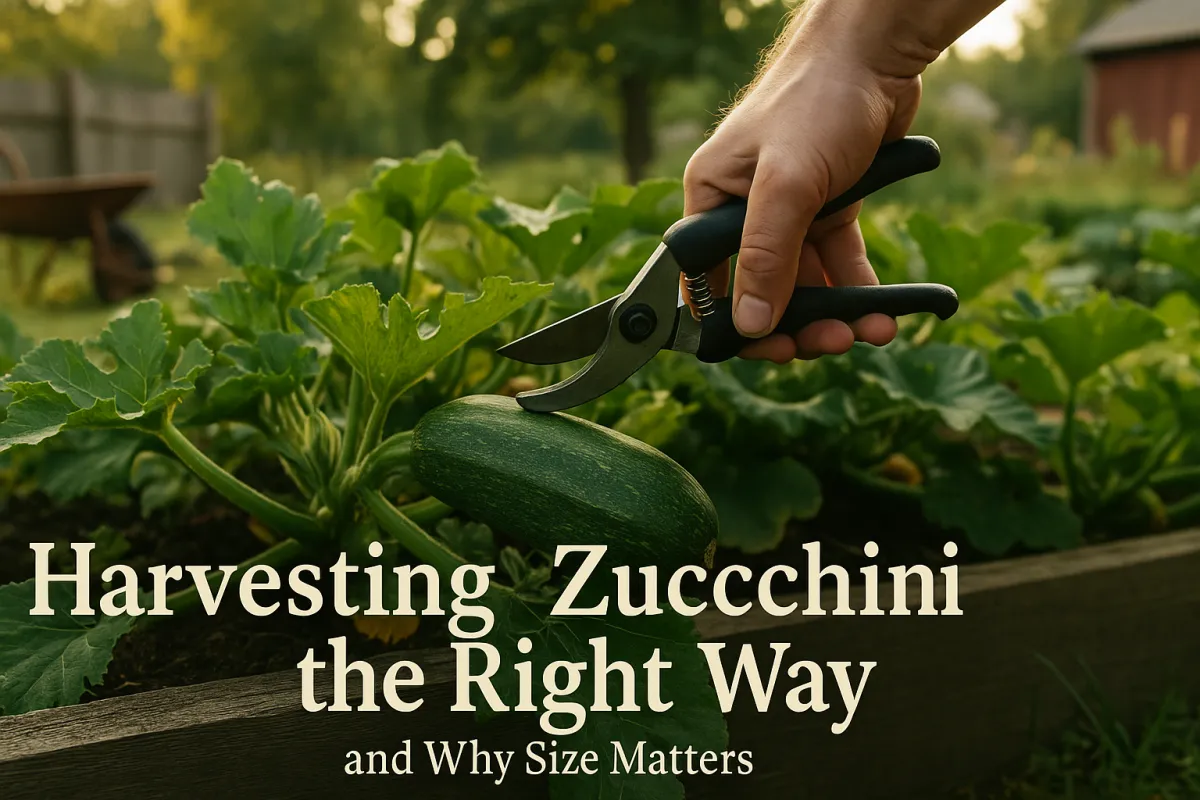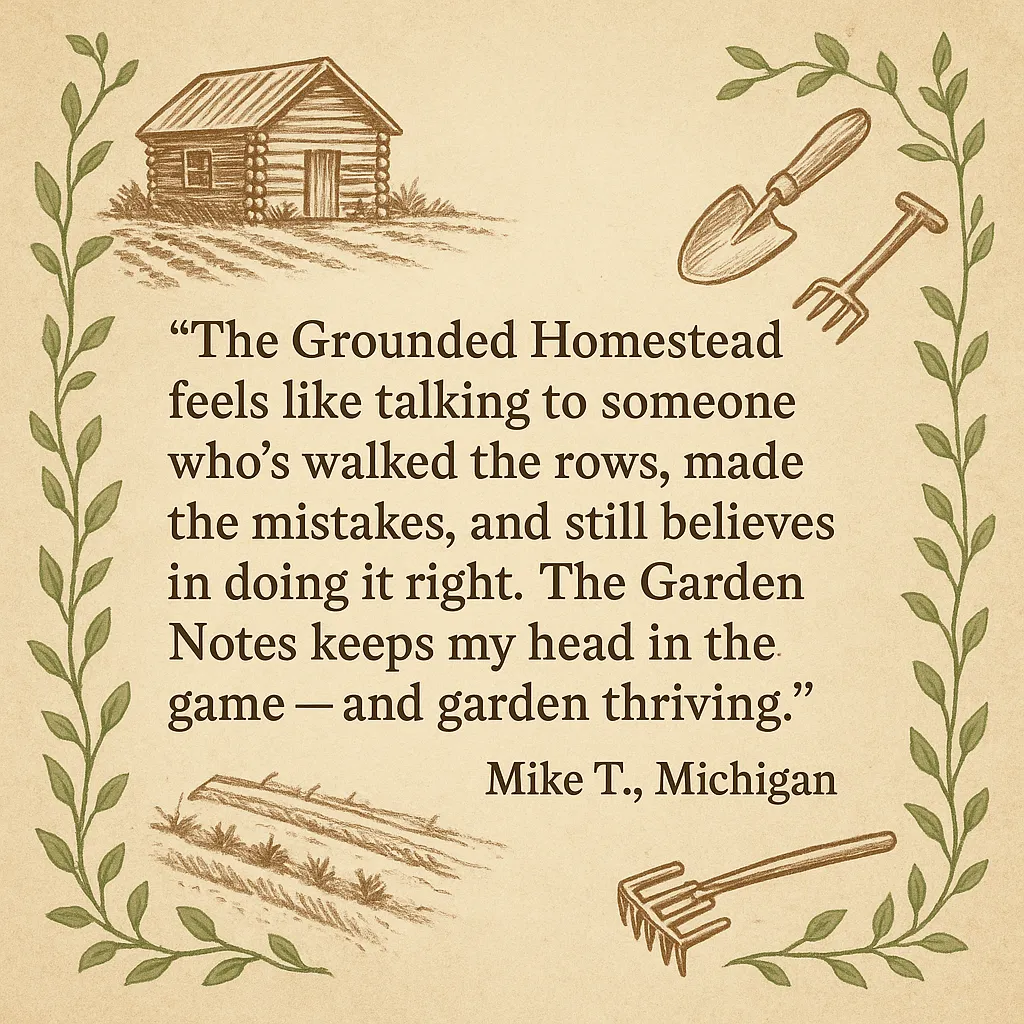
Harvesting Zucchini the Right Way (and Why Size Matters)
Harvesting Zucchini the Right Way (and Why Size Matters)
I still remember the first time I missed a zucchini.
It was hiding under a leaf the size of a dinner plate, half-buried in the mulch. When I finally spotted it, that thing was the size of a Louisville Slugger. You could’ve used it as a weapon in a pinch — but not in a stir-fry. It was pale, seedy, tough-skinned, and dry in the middle. That’s when I learned: zucchini doesn’t wait. If you’re not harvesting right — and on time — you’re losing more than just flavor.
So if you’ve ever been surprised by a squash that got away from you, you’re not alone. Even experienced growers miss a few. But there’s a rhythm to getting it right, and once you find it, zucchini will become one of your most generous, reliable crops.
Let’s talk about when to harvest, how to do it right, and why size always matters with this crop.
When to Harvest Zucchini for Peak Flavor
For tender, flavorful zucchini, aim to pick them when they’re about 6 to 8 inches long — roughly the length of a soda can. At this stage, the skin is glossy, the texture is firm, and the seeds are small and soft.
Here’s what to look for:
A slight give at the blossom end (not too hard, not too soft)
Deep green (or yellow, depending on variety), not pale or blotchy
A firm feel with no spongy spots
Too early? You’ll get a bitter, underdeveloped fruit that’s more skin than flavor. Wait until it fills out slightly — usually just a day or two makes all the difference.
Zone Tip: In warmer climates (Zones 7–9), zucchini may grow faster and hit prime size in a single day. Cooler zones can usually go every 2–3 days, especially early in the season.
Grandma’s Tip: “If it still looks shy, it’s not ready for supper.”
Why Size Really Matters
There’s a myth that bigger zucchini means more food. Truth is, the opposite is true.
Once zucchini grows too large, a few things happen:
The plant redirects energy into seeds, not new blossoms
The skin gets thick and leathery
The interior becomes dry, stringy, and less flavorful
Oversized fruit signals to the plant that its job is done. It’s moved into reproduction mode. And that slows or even halts further production. If you want more squash over the season, you’ve got to keep it picked early and often.
Visual Tip: Add a tag or clip on fruit when you first spot it, then harvest 2–3 days later. That’s your flavor window.
Harvesting Technique: Do It Clean, Do It Right
Zucchini vines are tender. Yank one fruit the wrong way, and you might snap off a developing flower or damage the stem.
Use these simple steps:
Use sharp garden scissors or pruners
Cut the stem about ½ inch above the fruit
Avoid twisting or pulling — it stresses the plant
If you’re moving from plant to plant, give your blade a quick wipe with alcohol between cuts. It helps prevent any disease from spreading in the patch.
How Often to Check: Daily Is Best
Zucchini doesn’t grow by inches per week — it grows by inches per night when the weather’s right.
Once your plants are producing:
Check daily, especially after a rain or in warm stretches
In Zones 6–9, this is essential once temps are above 75°F
In Zones 3–5, every 2 days might be enough early on, but pick up the pace by midsummer
Get in the habit: Morning walk, basket in hand, knife in pocket. Make it part of your routine, and you’ll keep your plants happy — and your fridge full.
What to Do with Overgrown Squash
Even with your best effort, you’ll find a giant from time to time. Don’t pitch it. Just shift your strategy.
Here’s how to use those big ones:
Preserve it: Shred and freeze it in 2-cup portions for muffins, breads, and fritters.
Feed it: Chickens, pigs, and goats will gladly help you out. So will your neighbors.
Compost it: Chop it up and toss it in. It’ll give back to next season’s soil.
Big zucchini might not shine on your dinner plate, but they’re far from wasted.
Bonus Resource: [Download your Zucchini Use Chart — freeze, feed, compost, repeat.]
Storing Fresh Zucchini After Harvest
Once harvested, zucchini is best used within a few days. Here’s how to store it right:
Keep unwashed in the fridge in a breathable bag (paper or perforated plastic)
Don’t seal in moisture — it causes soft spots
Use within 3–5 days for best flavor and texture
Tip: If you harvest a lot at once, blanch and freeze extras to avoid waste.
Companion Planting Tip: Don’t Let It Hide
Zucchini loves to hide. But smart planting can help.
Avoid dense companions that crowd the space. Try:
Basil – helps repel pests, and doesn’t hide fruit
Nasturtium – brings in pollinators and keeps the understory visible
Avoid: corn or other tall leafy crops too close — they cast heavy shade
Seeing your fruit clearly makes daily harvests easier.
Final Thoughts: Zucchini Abundance, Managed
Zucchini is a giver — but only if you meet it halfway.
Keep it picked small, sharp tools in hand, and check in daily. You’ll be rewarded with a steady flow of tender, delicious squash for weeks on end.
Grandma’s Wisdom: “If you’re picking daily, you’re winning.”
Make it part of your rhythm, and zucchini just might become your favorite crop to grow — and share.


Facebook
Instagram
X
Youtube